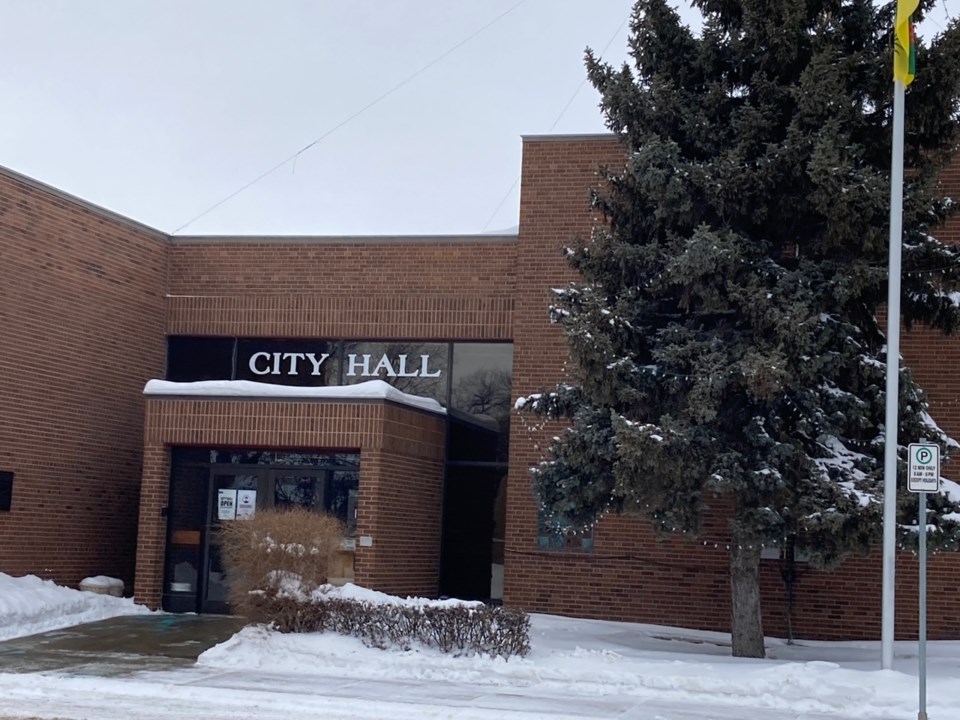ESTEVAN - A comprehensive new zoning bylaw has been brought to members of Estevan city council.
Council took a first look at the 150-page document at its Jan. 24 meeting. It did not give the bylaw first reading.
The bylaw is divided into sections for sign corridors, development permit procedures, development permit process, general regulations, land use specific regulations, parking and loading, zoning district regulations, sign regulations and more.
Richard Neufeld, the land development services manager for the city, said it’s a regulatory document that complements the official community plan that was previously approved by city council.
The zoning bylaw guides land use from a regulatory point of view for such issues as setbacks from property lines, the types of businesses that can be located in certain areas, the types of buildings that can be constructed and how they should be built.
“Estevan has a full range of different activities going on in it, so a lot of these things have to be covered. It is a little bit longer, I think, than the one that’s currently enforced from 2010, but there are a lot of things that have happened since then,” Neufeld said.
Many municipalities typically work on a 10-year cycle with their zoning bylaw. Neufeld started working on this in 2018, but the city decided to complete the official community plan first. Due to COVID and other factors, the bylaw was delayed.
There are a number of changes for the public to be aware. One is the way in which building construction is regulated.
“We used to have a model where every type of dwelling, for example, was defined,” said Neufeld. “Specifically, you had your mobile home, manufactured home, modular home, RTM (ready to move), stick-built dwelling and that kind of thing.”
He has encountered issues in which the manufacturer, vendor and buyer disagree on the type of home.
“Opening up the city to new technologies for house building should hopefully provide homeowners with ranges of house options that they didn’t have before,” said Neufeld.
In the past year, the city has had requests from people to switch their shingled roofs to metal roofs due to wind and hailstorms, and the city wants to be open to those requests.
The new bylaw calls for the city to move in the direction of “a house is a house is a house,” Neufeld said. If the building is compliant and esthetically fits into the community, the classifications will not be an issue.
The housing business is going through a revolution that started in the 1990s, Neufeld said, and there are even 3-D printers making homes in Canada and the U.S.
Another issue is how the city deals with shipping containers. They will be treated in a similar fashion as accessory buildings of other types, with how they’re classed and how they fit aesthetically into the neighbourhood.
The bylaw will also look at how the city handles home-based businesses.
“We’re moving in the direction to divide home-based businesses into two different categories. One would be where you have client visitations in the home, because that’s dealt with differently, and the other would be where you’re working out of your home office and you don’t have client visitations.”
For commercial properties, a number of definitions have been updated, and transition commercial areas have been provided along Fourth Street in which there are both residential and commercial buildings. The desire would be to have it be commercial, but it would be open to residential development in certain cases.
For industrial, the biggest change would be the Glen Peterson Industrial Park. Some uses would be removed that might be inappropriate for the area, because the city wants it to be a business area.
The city is trying to work in lock-step with the economic development board on this, he said.
This bylaw will also handle heritage properties or a heritage district.
The city will advertise the document for a few weeks and seek public feedback. When that period ends, Neufeld will bring forward amendments to council for a discussion.
Then a new version would be prepared for council for first reading. The city would follow that up with another four-week consultation period.




